-
Steel industry looks to leverage AI in value chain, boost green transition financing

The steel industry is poised for a revolutionary transformation as stakeholders gather for the Steel Conclave 2025, taking place on September 8-9 in the national capital. This two-day event aims to explore the integration of artificial intelligence (AI) within the steel value chain, potential financing avenues for a greener transition, and strategies to augment the availability of raw materials. With prominent figures such as Union Steel Minister H D Kumaraswamy and Minister of State for Heavy Industries and Steel Bhupathiraju Srinivasa Varma in attendance, the discussions promise to set a strategic direction for the sector’s future.
As detailed by the Indian Steel Association (ISA), one of the primary focuses of the conclave will be on leadership strategies that foster growth within the steel industry. Participants will delve into how AI can be effectively leveraged to enhance efficiency throughout the value chain, identifying pathways that support Aatmanirbharta—the initiative aimed at reducing dependence on imports by making India self-reliant in raw materials like iron ore.
Another major theme will be the financing necessary for the steel sector’s transition towards environmentally sustainable practices. Industry leaders are aware that decarbonizing the steel production process is not just a regulatory requirement but also an opportunity to innovate. The ISA aims to discuss frameworks that would mitigate price risks, improve logistics, and enhance infrastructure efficiency, laying the groundwork for a future-ready industry.
ISA President Naveen Jindal expressed the association’s commitment to steering the steel sector towards sustainability while reinforcing India’s position on the global stage. The emphasis on a resilient and future-ready steel industry reveals a proactive approach to sustainability imperatives, ensuring that economic growth does not come at the cost of environmental degradation.
Significantly, the Indian government’s recent decision to reduce the Goods and Services Tax (GST) on renewable energy products from 12 percent to 5 percent is seen as a substantial boon for the steel industry. It is anticipated that this policy change will facilitate a shift towards green power sources, enabling manufacturers to lessen their reliance on coal-based energy, which currently constitutes 85 percent of the sector’s energy consumption and contributes heavily to carbon emissions.
The need for a greener transition is underscored by the fact that the steel industry accounts for approximately 20 percent of India’s total industrial energy consumption, making it a focal point in the country’s quest for a sustainable future. By reducing coal dependency, the industry can make significant strides in cutting down its carbon footprint and contribute to broader climate change goals.
Fujiyama Power Systems highlighted that the government’s reform is expected to enhance the affordability of rooftop solar installations, promoting adoption across various segments, including residential, commercial, and institutional users. According to them, this reform could accelerate India’s progress towards achieving its net zero targets and strengthen initiatives like the PM Surya Ghar Muft Bijli Yojana, which aims to promote solar energy usage.
Ultimately, the discussions and outcomes from the Steel Conclave 2025 will not only shape the immediate future of the steel industry in India but could also serve as a model for other sectors grappling with similar challenges related to energy transition and sustainability. By embracing AI and innovative financing solutions, the steel sector can navigate its path towards a greener and more resilient future, aligning with global efforts to combat climate change while ensuring continued economic growth.
-
Meta’s backstop is linchpin for $26 billion AI data-center deal

In a significant move that underscores the growing intersection of technology, finance, and artificial intelligence, Meta Platforms Inc. has secured a staggering $26 billion in debt funding for the construction of a state-of-the-art data center in Louisiana. This funding arrangement has sparked intense competition among lenders primarily due to a unique guarantee offered by the tech giant, which essentially shields investors from potential losses through a residual value guarantee.
The Hyperion facility, poised to become one of the largest data centers in the world at 4 million square feet, will be constructed and owned by a joint venture while Meta will utilize the space under a 20-year lease. However, what’s particularly noteworthy about this deal is the innovative financing structure that allows Meta to keep this debt off its balance sheet. This strategic maneuver not only liberates financial resources for further investment in artificial intelligence developments but also allows Meta to maintain flexibility as it navigates the rapidly evolving technological landscape.
To further incentivize lenders, Meta provided a novel safety net: should the company choose to terminate the lease prematurely or if the value of the data center depreciates below an agreed-upon threshold, Meta promises to reimburse investors for any incurred losses. This pioneering approach is particularly relevant given the rapid advancements in technology which could render such assets obsolete in the foreseeable future. Experts agree that while the demand for AI infrastructure is escalating, it also brings along a heightened risk factor. Teddy Kaplan, who oversees a net lease real estate strategy at New Mountain Capital, remarks on the unprecedented nature of these deals and the potential for quick technological advancements that could outdate the facility’s capacity.
Meta’s decision to implement this residual value guarantee is setting a precedent in the industry. Historically, such guarantees have been more common in other sectors but using them in the context of a massive data center is a novel approach that could reshape how tech companies finance such ventures in the future. This structure not only reassures investors but also encourages them to participate in financing a sector that is projected to grow exponentially as demand for AI models and their underlying infrastructure surges.
The competitive nature of this financing round is indicative of the increasing interest from major asset managers in the AI infrastructure space. Pacific Investment Management Co. (PIMCO) was selected to lead this impressive financing effort, showcasing their capability to manage such a colossal investment efficiently. Adding to the financial muscle behind this deal, Blue Owl Capital Inc. is contributing a notable $3 billion in equity to the joint venture, signaling substantial confidence in the returns from this investment despite inherent risks.
The structured bonds from this deal are slated to span a remarkable 24 years, encompassing four years dedicated to construction prior to the initiation of lease payments. Anticipated to receive investment-grade ratings, these bonds will likely appeal to a wide range of institutional investors seeking exposure to the burgeoning AI sector. It’s essential to recognize that the incredible scale of this investment not only aligns with Meta’s ambitions but also exemplifies the broader trend where tech companies are racing against time to secure substantial financing for their AI initiatives.
As this case illustrates, the intersection of artificial intelligence and finance is evolving rapidly. Tech giants like Meta are demonstrating the lengths to which they will go to secure the resources needed for competitive advancement in AI. With financial pipelines being established to underwrite these critical infrastructure projects, other companies might regard Meta’s innovative financing structure and risk management strategies as a blueprint for future endeavors. The implications for business leaders, product builders, and investors are vast, as we witness a new era where technology continues to leverage financial ingenuity to achieve groundbreaking innovations.
-
I tested the AI-enhanced Geekom A9 Max mini PC – and the superb performance makes it a must-have pro-grade office machine

In an era where technology demands exceptional performance in compact form factors, the Geekom A9 Max mini PC emerges as a powerful contender. This mini PC seamlessly integrates advanced AMD Ryzen AI technology, specifically with the Ryzen 9 HX 370 equipped with a Neural Processing Unit (NPU). With its stylish design and impressive specs, the A9 Max is tailored to meet the needs of professionals, particularly those in creative and technical fields.
The initial testing phase revealed the Geekom A9 Max’s remarkable prowess. The integrated processor demonstrated substantial improvements in application speed, notably when using AI-optimized applications such as Photoshop. The combination of 32 GB of RAM and a 2 TB SSD ensured that even the largest files and most demanding applications ran smoothly, making it a robust choice for office-related tasks. From browsing heavy documents to multitasking with various applications, this mini-PC managed to strike a harmonious balance between performance and usability.
One of the standout features of the Geekom A9 Max is its ability to handle demanding video editing tasks. While it performed admirably during 1080p video editing in software like Premiere Pro and DaVinci Resolve, users seeking to push the boundaries to 4K video editing might encounter some performance limitations. Although the CPU holds its ground, the lack of a dedicated GPU means that the system’s potential could be hampered during these intensive tasks. Users needing to work with high-resolution projects may want to consider this factor in their purchasing decision.
Connectivity is another area where the A9 Max shines. Equipped with multiple LAN ports enhances its capability to integrate seamlessly into any office setup. Furthermore, robust Wi-Fi 7 support ensures reliable internet access, although initial testing showed some connection issues with older routers. Switching to a more updated Wi-Fi 7 network resulted in improved speed and stability, a boon for professionals relying on consistent internet performance.
The design aspect of the A9 Max does not go unnoticed either. Its compact size does not compromise on connectivity; featuring four USB ports on the front, it caters to the diverse needs of users in creative environments. The inclusion of an SD card slot on the side provides quick access for offloading media files, a thoughtful touch for photographers and videographers who frequently transfer data from cameras.
Moreover, the ability to expand internal storage through an additional M.2 SSD slot adds significant value for users who work with large files or run multiple demanding applications concurrently. This flexibility is vital in modern workplaces where data demands continue to grow.
In conclusion, the Geekom A9 Max mini PC is a commendable option for professionals in need of a dependable, compact workstation. Its features, particularly the AI-enhanced processing capabilities and robust connectivity options, are designed to enhance productivity and efficiency. While there are some limitations regarding graphics performance for high-end video editing, the overall package delivers exceptional value and functionality suited for a range of professional applications. Whether for general office work, light creative tasks, or AI-enhanced applications, this mini PC indeed stands out as a worthy addition in any modern workspace.
-
US: Anthropic to pay $1.5 billion in AI lawsuit settlement

In a landmark decision, US artificial intelligence giant Anthropic has agreed to pay at least $1.5 billion to settle a class action lawsuit brought by authors claiming copyright infringement. This settlement, if approved by the court, will become the largest in US copyright history, suggesting a significant shift in how intellectual property rights are managed in the age of AI.
The lawsuit was initiated by a trio of authors—Andrea Bartz, Charles Graeber, and Kirk Wallace Johnson—who accused Anthropic of utilizing pirated books to enhance the functionality of its AI chatbot, Claude. This chatbot has emerged as a formidable competitor against industry leaders such as OpenAI’s ChatGPT, reflecting the intensifying competition among AI firms. The plaintiffs are stressed the need for proper authorization when using copyrighted material to train AI systems, aiming to safeguard authors’ rights against unauthorized exploitation.
The potential implications of this settlement reach beyond mere financial restitution. The deal, which is expected to encompass about 500,000 books, mandates that approximately $3,000 (€2,500) be paid for each affected work. This unprecedented legal precedent emphasizes the crucial balance between technological advancement and the protection of intellectual property rights—a discussion increasingly important as the AI industry continues to grow rapidly.
Mary Rasenberger, CEO of the Authors Guild, highlighted the broader significance of the settlement, emphasizing that it sends a robust message to the AI sector regarding the potential legal ramifications of infringing on authors’ rights. The agreement serves as a reminder that utilizing copyrighted works without authorizations can lead to severe legal consequences, particularly in instances where authors may lack the resources to fight back against tech giants.
This settlement is not an isolated occurrence. There are numerous ongoing lawsuits against other technology companies such as OpenAI and Meta, indicating a trend where copyright holders are actively asserting their rights amidst the rising tide of AI development. The outcome of these lawsuits could shape the legal landscape surrounding AI training methodologies and copyright compliance, defining how data is sourced in the future.
With this settlement, Anthropic faces not only a hefty financial obligation but also the need to re-evaluate its AI training processes going forward. The implications of the lawsuit extend to other tech companies as well, revealing the critical importance of compliance with copyright laws. For business leaders and investors in the AI space, this case serves as a prompt to revisit their content acquisition strategies and solidify their legal standing to avoid potential pitfalls.
As we move further into the AI era, this moment serves as a crucial juncture for the industry. The settlement raises significant questions about the ethical obligations of AI developers and the legal confines within which they operate. As technology continues to evolve, so must the frameworks that govern intellectual property, ensuring a fair yet progressive approach to innovation.
In conclusion, Anthropic’s $1.5 billion settlement is poised to set a new standard in the intersection of AI technology and copyright law. It illustrates a growing recognition of the value of intellectual property in the digital age and underscores the pressing need for clear legal guidelines as we navigate this uncharted territory.
-
Meta is paying contractors up to $55 an hour to build AI chatbot characters
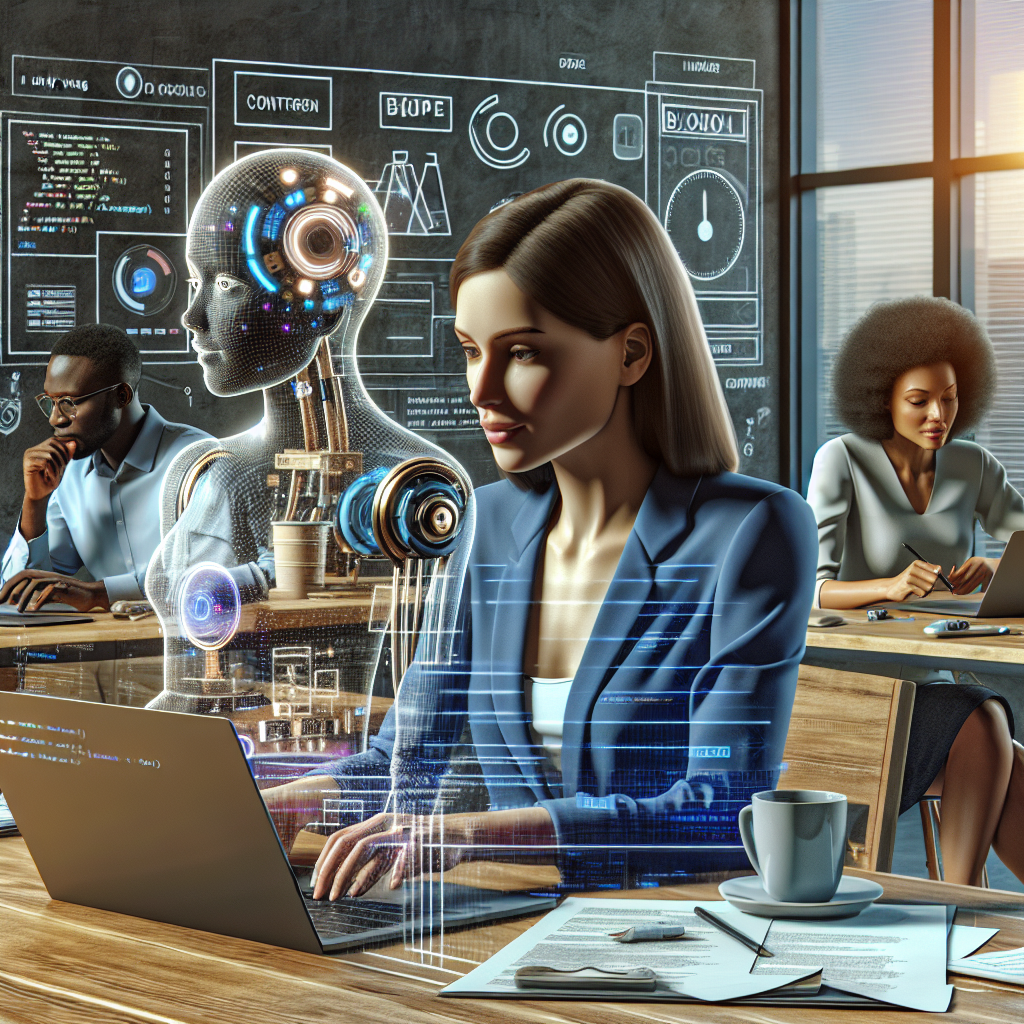
In an innovative move, Meta is hiring contractors at competitive rates to develop character-driven AI chatbots tailored to various international markets. This initiative underscores the company’s commitment to enhancing user engagement across its platforms — Instagram, Messenger, and WhatsApp — by integrating culturally relevant and relatable chatbot experiences.
According to job postings, contractors fluent in languages such as Hindi, Indonesian, Spanish, and Portuguese can earn up to $55 an hour. These contractors are tasked with bringing a creative vision to life, shaping the personalities of chatbots that resonate with local cultures. Along with a strong foundation in storytelling, candidates must possess knowledge of prompt engineering and AI content pipelines, ensuring that the chatbots are not only engaging but also contextually appropriate.
Meta’s CEO, Mark Zuckerberg, envisions these AI characters as a means to expand social interactions, suggesting they could complement real-world friendships. This reflects a broader trend in AI where digital companions are increasingly seen as valuable additions to social media interactions. In his words, “Over time, we’ll find the vocabulary as a society to articulate why that is valuable.” This sentiment highlights the evolving perception of AI as not merely a tool but as an integral part of modern social dynamics.
The company began experimenting with AI chatbots in 2023, initially featuring celebrity alter egos such as Kendall Jenner and Tom Brady. However, following a swift re-evaluation, Meta shifted its strategy to empower users by launching the AI Studio platform, which enables anyone to create their own chatbots. This transition emphasizes the balance between user-generated content and company-driven initiatives in shaping the AI landscape.
By employing contractors for localized chatbot development, Meta signals a significant investment in qualitative enhancements to its AI offerings. This strategic approach allows the company to maintain a direct influence on the personalities it cultivates, ensuring they align with the cultural expectations and nuances of key markets like India and Indonesia.
However, this expansion into AI chatbots has not been without controversy. An investigation revealed that Meta’s internal guidelines previously permitted bots to engage in inappropriate conversations, including romantic dialogues with minors and the dissemination of misleading medical advice. These revelations have triggered demands from U.S. lawmakers for more stringent oversight of Meta’s AI operations, underscoring the ethical dilemmas inherent in AI deployment.
In light of these challenges, Meta has made modifications to its chatbot policies, but the consequences of such previous oversight raise pertinent questions about the responsibility tech giants bear in deploying advanced AI systems. The incorporation of character-driven chatbots into mainstream applications not only changes how users interact with technology but also necessitates a conversation about governance and ethical boundaries in AI development.
Furthermore, privacy concerns loom large as researchers warn that influencers and local contractors, despite their creative potential, may also complicate the privacy dynamics regarding personal data shared with these bots. As businesses and individuals grow more accustomed to AI interactions, establishing secure practices that safeguard user privacy will be crucial to fostering trust.
In conclusion, Meta’s efforts to invest in AI chatbot development through localized contractor roles reflects a significant movement towards personalized and culturally relevant digital experiences. As the landscape of social media continues to evolve, the role of AI will undoubtedly expand, necessitating ongoing dialogue regarding its impact on communication, safety, and interpersonal relationships.
-
Traditional Marketing is Broken : New AI Conversions Loop Framework for 2025
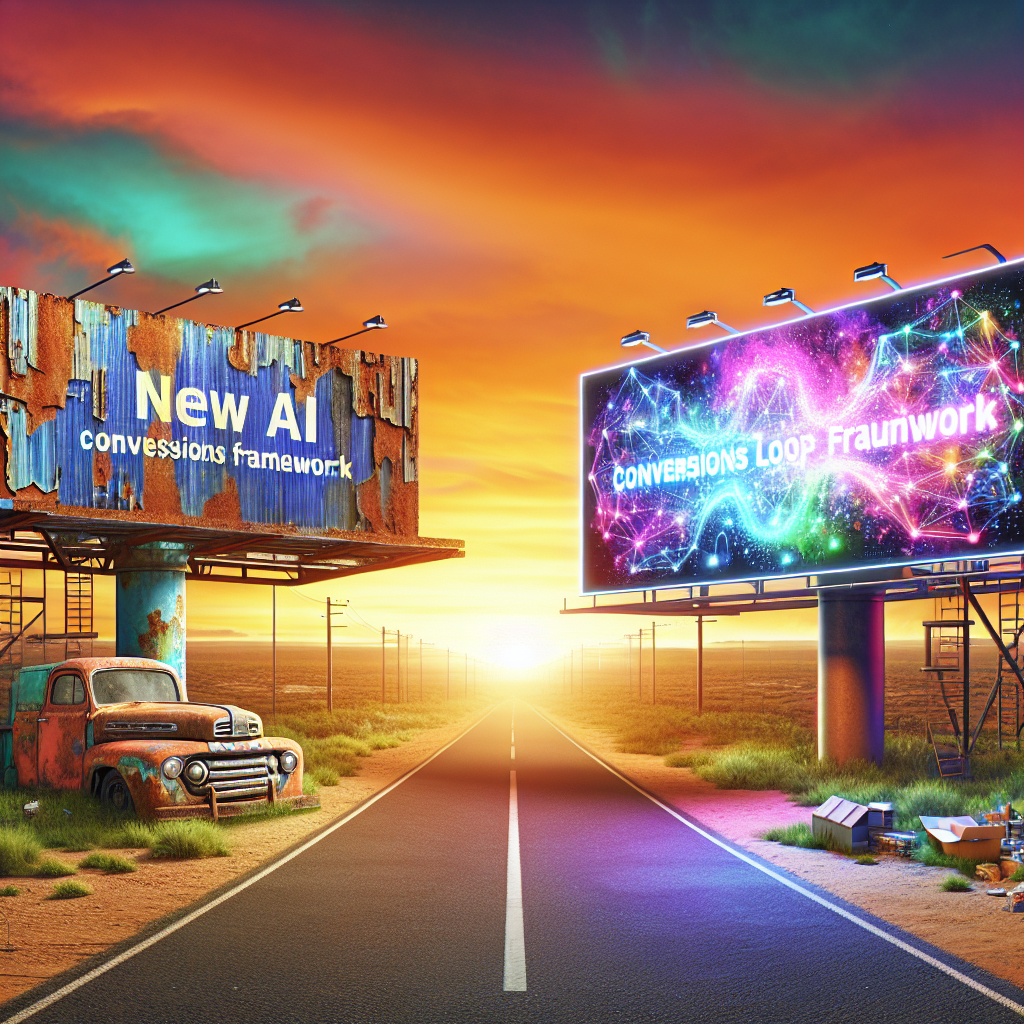
In today’s fast-paced digital environment, traditional marketing is stumbling to keep pace with shifting consumer behaviors and technological advancements. As marketers, the urgency to adapt to these changes is critical, especially given that over 60% of Google searches now end without a click. Consumers, increasingly relying on AI tools like ChatGPT for information, are reshaping the landscape. The conventional approach of bombarding consumers with marketing messages is yielding a diminishing return. This is the context in which the new AI Conversions Loop Framework has emerged.
The Loop Framework is being positioned as a revolutionary methodology designed to redefine the marketing playbook for the future. It recognizes that the old strategies—the email blasts, search-optimized articles, and ubiquitous ads—are often lost amidst the noise of digital platforms that are oversaturated with content. In response to this fragmentation, the Loop Framework introduces a fresh perspective on how to engage consumers in an effective and meaningful way.
This innovative framework features a four-phase approach: Express, Tailor, Amplify, and Evolve. Each of these phases works alongside advanced AI tools to optimize conversions by creating personalized, relevant experiences for potential customers. By focusing on high-intent visitors rather than simply boosting web traffic, the Loop Framework offers a roadmap to engage an audience that is already primed for interaction.
Understanding the Phases of the Loop Framework
The first phase, Express, aims at creating initial engagement through succinct and direct messaging that captures attention. Here, AI can be leveraged to analyze user data quickly, allowing marketers to craft messages that resonate effectively with specific segments of the audience.
Next comes the Tailor phase, where the focus shifts to personalization. By deeply understanding consumer preferences and behaviors, marketers can adapt their messaging to provide tailored experiences. AI tools facilitate this process through real-time analytics, allowing campaigns to be optimized as data comes in.
Following Tailor is Amplify, where successful campaigns can be scaled through automation. By utilizing AI-driven insights, marketers can identify winning strategies and enhance their reach efficiently. This phase capitalizes on the widespread use of AI in digital marketing, enabling faster campaign launches and higher conversion rates.
Last but not least, the Evolve phase encourages continuous improvement. The marketing landscape is ever-changing, and businesses must be agile enough to adapt their strategies based on ongoing consumer interactions and feedback. Utilizing AI to track performance metrics and consumer engagement keeps marketers nimble.
Why the Loop Framework is Essential
With many traditional marketing strategies experiencing significant challenges—such as shrinking email open rates and ineffective ad placements—the urgency for a paradigm shift is clear. The Loop Framework not only provides a solution but also emphasizes the importance of adapting to current digital behaviors shaped significantly by AI.
The advantages of using AI tools within this framework are multifaceted. They assist in identifying new opportunities and predicting upcoming trends, ensuring that businesses remain competitive. Moreover, these tools can provide real-time insights that drive critical marketing decisions and strategies.
Ultimately, the focus is shifting from merely attracting massive audiences to engaging with consumers who have high intent, thus creating meaningful scenarios where businesses can resonate at deeper levels with their audience’s needs and preferences. This is where AI shines—it assists marketers in crafting experiences that are not only impactful but also deeply personalized.
The future of marketing is not just in doing more; it’s in doing it smarter.
In conclusion, the Loop Framework represents a significant evolution in marketing tactics, reflecting the shifting dynamics of consumer behavior in the digital era. Adapting to this new reality requires a commitment to embracing technological advancements and rethinking how value is provided to consumers. Businesses willing to navigate through chaos and fragmentation with agility will undoubtedly find themselves at the forefront of the marketing landscape in 2025 and beyond.
-
AI-powered portrait studio in Dubai delivers professional photos, without a photographer
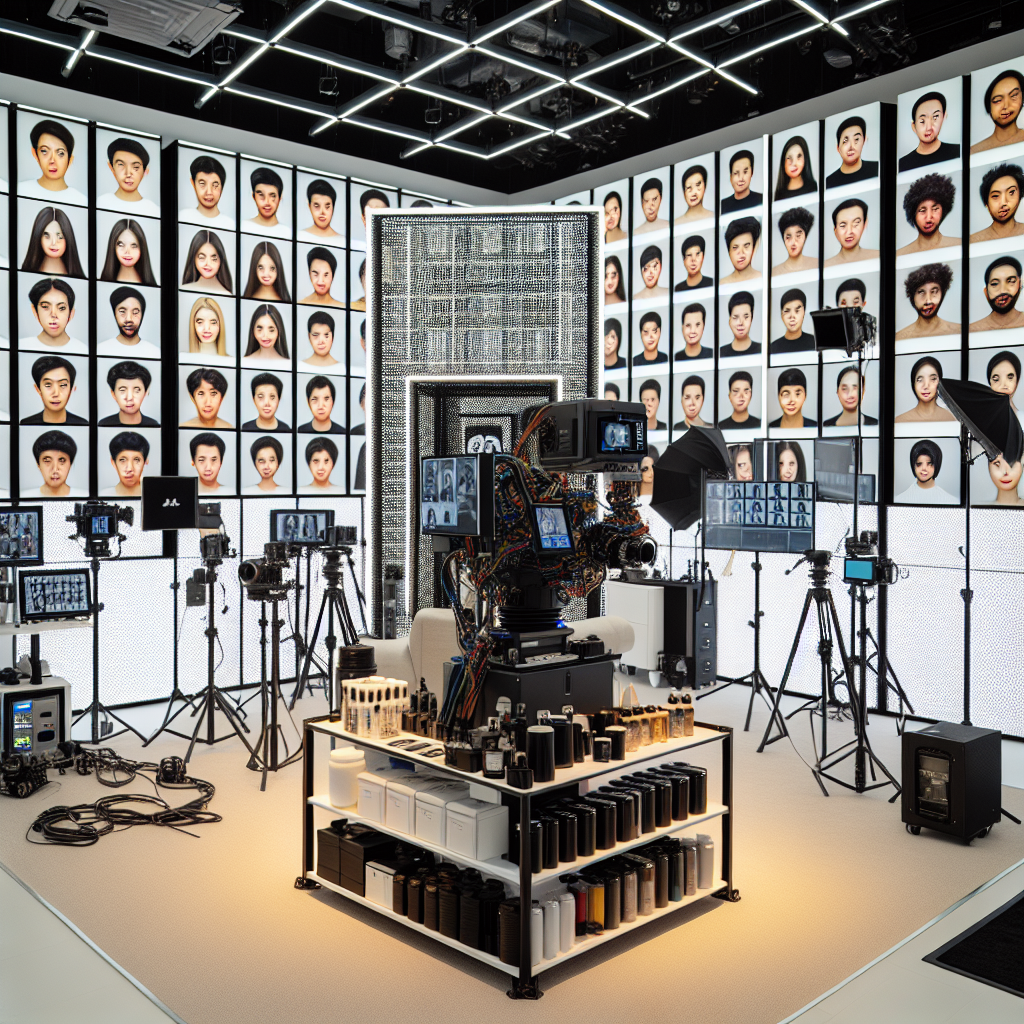
In a groundbreaking development for photography enthusiasts, Self.space has launched a revolutionary concept in Dubai that redefines the traditional portrait session. At Self.space, clients are empowered to take control of their own photoshoots, eliminating one of the primary sources of anxiety when it comes to booking professional portraits—the presence of a photographer. This innovative studio provides an exclusive private space equipped with professional-grade cameras and a full-length mirror, allowing clients to capture unlimited photos at their own pace.
The experience at Self.space is designed to be entirely self-directed, with 50-minute sessions priced at AED 750. Each session includes access to advanced lighting controls, music selection, makeup facilities, and various accessories. The studio is spacious enough to accommodate up to four individuals, making it an ideal setting for group photographs or solo sessions.
What sets Self.space apart from conventional studios is its commitment to privacy and the integration of AI technology. In an era where consumers are increasingly concerned about the handling of their personal data and digital images, Self.space promises a privacy-first approach. After each session, the photos undergo AI-powered retouching, ensuring that no human staff has access to the images before they are encrypted and delivered to a password-protected gallery. This guarantees that clients can enjoy their photos without the fear of unauthorized access or mishandling.
The studio’s emphasis on consumer autonomy reflects a broader trend in various industries where traditional service hierarchies are being challenged. As customers seek greater ownership over their personal experiences, Self.space embodies this shift by allowing individuals to be both creators and subjects of their own portraits. The removal of direct human interaction during the shoot alleviates the pressure and discomfort often associated with traditional photography sessions, transforming the experience into one that feels both empowering and liberating.
Moreover, Self.space showcases AI not just as a disruptive force, but as a protective entity. Instead of creating images for users, AI here serves the role of guardian, facilitating retouching and privacy assurances. This concept prompts a thought-provoking question: In what other sectors can AI be reframed as a champion of consumer autonomy and security?
Self.space exemplifies how technology can significantly enhance personal experiences in various domains. By prioritizing privacy and offering an interactive photography experience, it sets a new standard for what consumers can expect from photography services. This model of automation coupled with user empowerment provides valuable insights for business leaders, product builders, and investors, especially in service-oriented industries.
As the photography landscape evolves through such innovations, Self.space is likely to pave the way for similar concepts around the globe. The demand for personalized experiences, combined with a growing emphasis on privacy, may encourage other businesses to look towards AI to refine their service offerings. As consumer expectations continue to shift, the lessons learned from Self.space’s initial success could serve as a blueprint for implementing AI-driven solutions across various sectors, enhancing user autonomy while fostering a sense of security.
In conclusion, Self.space’s innovative approach to photography truly highlights the potential of AI as an enabler and protector of consumer rights. Offering a unique combination of privacy, self-direction, and technological sophistication, this new portrait studio is certainly an intriguing development worthy of attention from those involved in the intersection of technology and consumer experiences.
-
Watch: Stair-climbing robot vacuum cleaner, snore buds, 24/7 AI conversation recorder, AI security cams among new gadgets at IFA
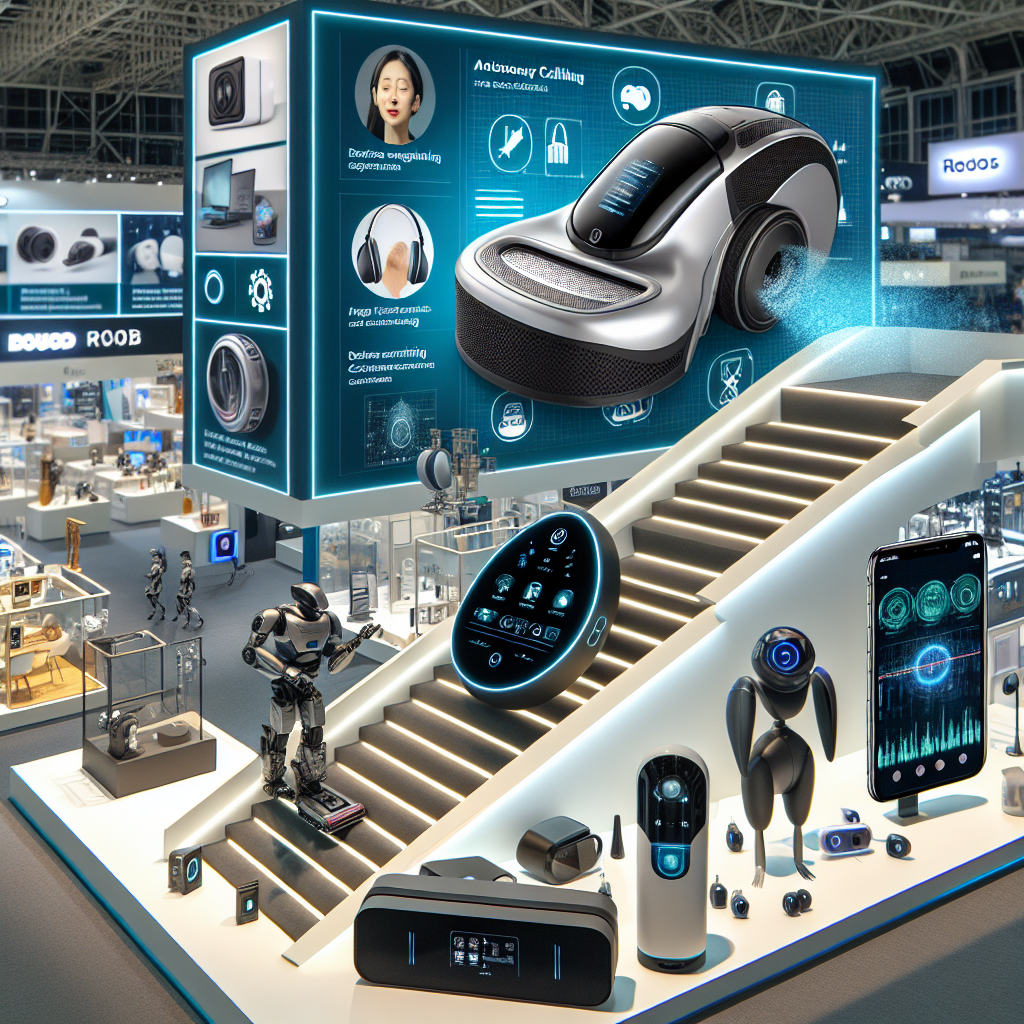
The recent IFA technology trade show showcased an exciting lineup of innovative gadgets, including a stair-climbing robot vacuum known as the Marswalker. Set to release in the first half of next year, this robot is engineered not just for straight stairs but is also billed to navigate bends, demonstrating the advancements in robotics and home automation.
Integrating with Eufy’s existing robovacs, the first-generation Marswalker aims to pave the way for a future where multiple brands can collaborate, enhancing the experience of home cleaning. Although pricing details remain unannounced, this unique approach signifies a step forward in home robotics, with potential implications for efficiency in household chores.
Beyond cleaning, home security underwent a transformation with Eufy’s demo of the AI Core, anticipated for release in 2026. Touted as the world’s first large-model AI agent for domestic use, it builds upon the latest AI chips from Qualcomm to provide homeowners with an intelligent surveillance system. Anker’s communications director, Robert Berg, illustrated its potential by detailing scenarios like checking on pets or family members through a simple voice query—“Where’s my cat?” or “Did my daughter get home from school?”
Equipped with facial recognition and trained for over 100 scenarios, the AI Core demonstrates a significant leap in how home security can function. Unlike traditional systems that primarily react to motion, AI Core aims to differentiate between various activities, achieving 95% accuracy in correctly identifying potential risks. This redefined capability offers a more proactive approach to home safety, guiding users with accurate information and alerts tailored to their environments.
Another key feature is its quick-response mechanism, where the AI security agent acts within three seconds. To enhance safety further, AI Core will autonomously engage preventive measures like activating lights or issuing warnings when detecting unusual activity. All of this is processed with the consideration of privacy, ensuring data integrity by storing it locally.
In conjunction with AI Core’s features, Eufy is launching the eufyCam S4, a hybrid camera set to elevate home monitoring capabilities. The eufyCam S4 ingeniously combines a static 4K fixed lens with dual 2K pan-tilt-zoom capabilities, delivering comprehensive coverage while minimizing blind spots. This model aims for commercial availability in October, with pricing set at $799.95 for a single unit or $1899.95 for a two-camera kit along with a base station for enhanced functionality.
Another fascinating innovation introduced at IFA is the Soundcore AI Voice Recorder, which offers continuous recording capabilities. Designed to clip onto clothing, it enables users to highlight crucial audio moments with a simple double-tap. This device represents a blend of technology and usability, catering to professionals and everyday users who wish to capture and organize information efficiently.
The unveiling of these products at IFA paints a promising picture for the future of consumer technology. From advancements in robotics like the Marswalker to the integrative features of AI Core and sophisticated security solutions, these gadgets underscore a robust movement towards making homes smarter and safer.
As these innovations prepare for their market debut within the next year, they signal a wave of updates in home automation and security. Businesses and investors should take note of these developments as they highlight significant opportunities within the technology sector, particularly in areas combining AI with everyday applications. The landscape of home automation is ever-evolving, and these products mark just the beginning of a new era for intelligent living spaces.
-
After Conquering Fortune 100 Testing Challenges, TestGrid Doubles Down on AI with CoTester™ 2.0
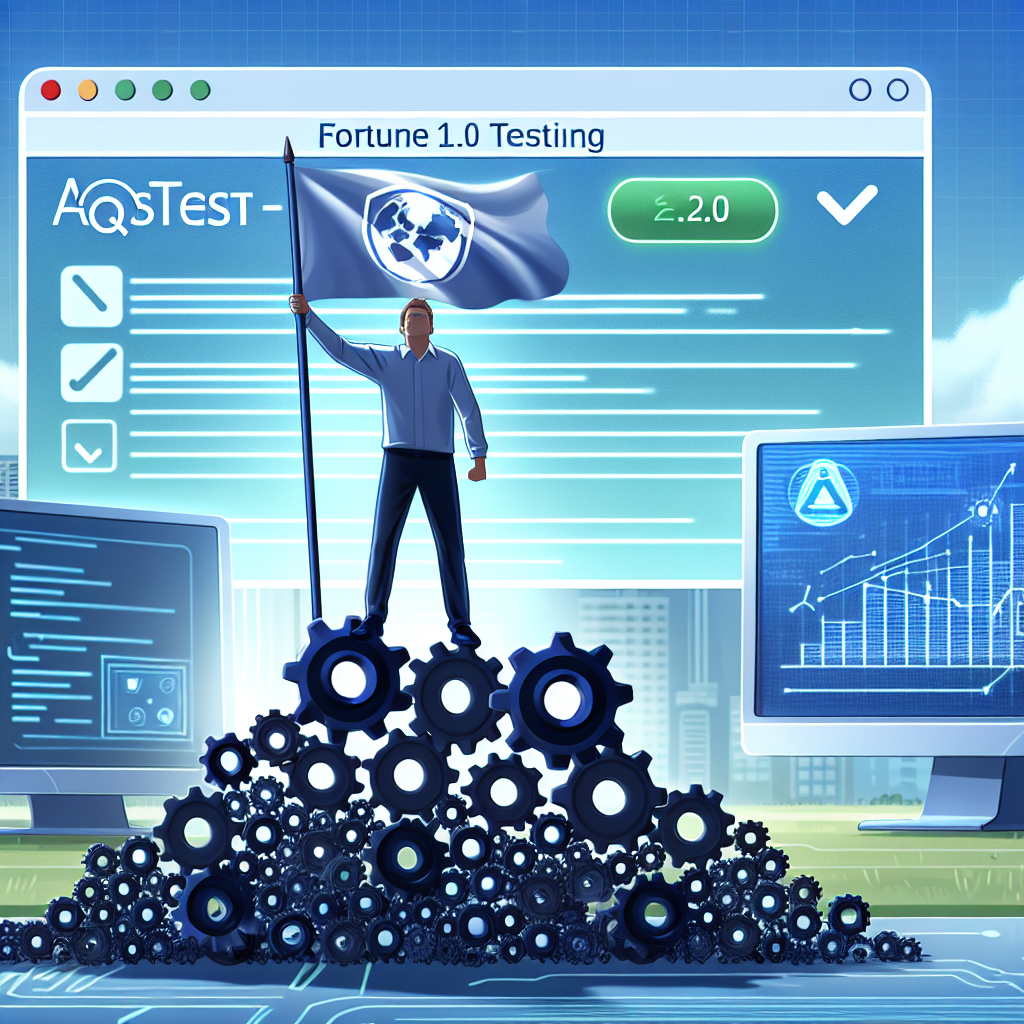
TestGrid, a leader in testing SaaS, has made waves in the software testing arena by launching CoTester™ 2.0, an innovative AI testing agent crafted specifically to resolve the common failures encountered with early AI testing tools. This release, announced on September 4, 2025, marks a significant advance in automated testing capabilities, particularly for large enterprises.
In a landscape where many first-generation AI-driven platforms fall notably short, CoTester 2.0 promises to redefine expectations. The typical shortcomings of these platforms include brittle automation, limited test coverage, and an untenably high requirement for maintenance, which often results in elongated release cycles and unreliable test suites. TestGrid directly addresses these challenges with CoTester™ 2.0, which utilizes a multimodal Vision-Language Agent (VLM) to interpret applications as a human tester would, merging visuals, text, and layout for intelligent automation.
What sets CoTester apart is its avant-garde combination of natural language understanding, low-code customization, and full-code flexibility. This unified platform empowers enterprises to maintain control while enabling automation through well-defined guardrails. CoTester guarantees that critical checkpoints validate its processes and that actions are not executed without human approval. This structure ensures that AI enhances productivity without overshadowing human decision-making, allowing seamless collaboration between human users and the technology.
In addressing the nuances of debugging, CoTester provides detailed execution logs, relevant screenshots, and clarity on root causes, drastically improving the speed and reliability of issue triage. The blend of adaptive AI with robotic test automation (RTA) that lies at the heart of CoTester signifies a transformative approach: it allows for intelligent test design that adapts dynamically to changes within applications, all while executing with robotic precision.
The capabilities of CoTester are robust and multifaceted. It caters to a wide array of testing needs, seamlessly managing UI, API, and non-UI testing without compromise. Customizable execution parameters give teams control over how and when tests are run, and users can leverage their own test data from a variety of internal sources. Importantly, TestGrid provides actionable insights instead of mere pass/fail outcomes, expediting issue resolution processes and triage.
Additionally, the hybrid execution modes available in CoTester—including prompt-driven, record-and-play, NLP low-code, or full-code—ensure flexibility for diverse user needs, from business analysts to seasoned automation engineers. Security remains paramount, as CoTester incorporates enterprise-grade protection featuring full encryption and role-based access controls, ensuring no vendor lock-in and compatibility across various environments including web, mobile, cloud, and on-premise.
Equifax’s SVP of Technology, Balaji Mudduluri, highlighted the value of CoTester, stating, “As systems grow and teams expand, staying coordinated becomes harder than writing the tests themselves. CoTester introduces a level of structure that makes it easier to keep automation reliable over time.” This reflects a broader truth in software development; as teams scale, collaboration, and effective management become critical to maintaining quality.
Early adopters of CoTester 2.0 have reported extraordinary improvements in their testing processes. Notably, companies leveraging the platform experience regression cycles that are up to 80% faster, a staggering over 90% reduction in the time taken to create and maintain tests, and threefold improvement in detecting issues during critical workflows such as login and checkout.
With the backing of top Fortune 100 companies already utilizing TestGrid’s extraordinary platform, CoTester 2.0 represents a major step forward in leveraging AI technology to enhance software testing efficiency. The potential ramifications for enterprises seeking to streamline their testing efforts, reduce costs, and accelerate release cycles are profound.
-
Huawei released an AI SSD which uses a secret sauce to reduce the need for large amounts of expensive HBM
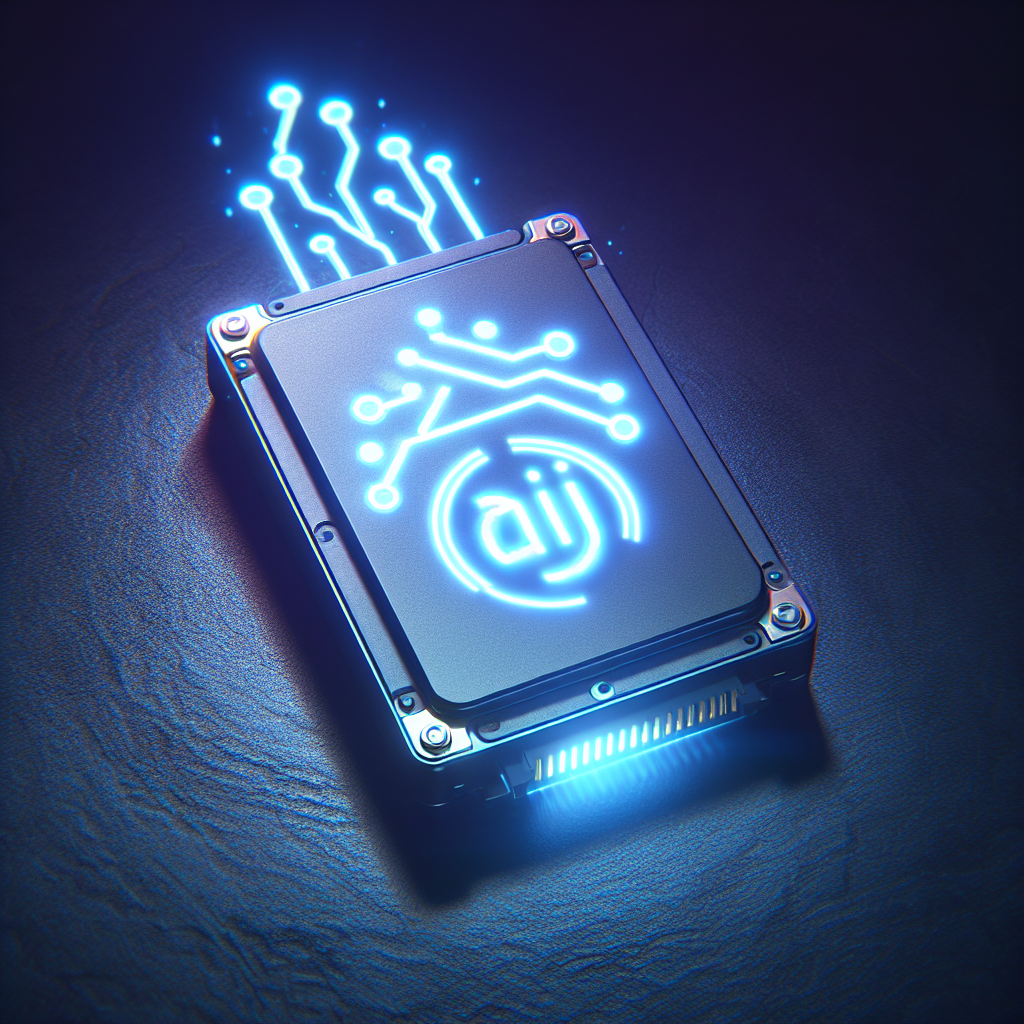
Huawei has made a significant advancement in memory technology with the release of its AI SSDs, aiming to address the escalating challenges associated with artificial intelligence workloads. The company introduced the OceanDisk EX, OceanDisk SP, and the OceanDisk LC 560, marking a pivotal shift from traditional high-bandwidth memory (HBM) systems. This move comes amid supply constraints that have restricted Chinese firms’ access to HBM, driving the need for innovative solutions.
The OceanDisk LC 560 stands out as the largest SSD ever created, boasting a whopping capacity of 245TB. At Huawei’s recent Data Storage AI SSD launch event, company executives highlighted the importance of overcoming the “memory wall” and “capacity wall,” which pose significant bottlenecks to AI training efficiency. Zhou Yuefeng, the vice-president and head of Huawei’s data storage product line, emphasized that these issues are critical to the performance and cost-effectiveness of IT infrastructures. Overcoming these barriers is essential for fostering a positive AI business cycle.
The specifications of the new drives reveal their capabilities. For instance, the OceanDisk EX 560 is labeled as an “extreme performance drive,” featuring write speeds of 1,500K Input/Output Operations Per Second (IOPS) and incredibly low latency of less than 7 microseconds. This drive also boasts an impressive endurance of 60 Drive Writes Per Day (DWPD), which means it is well-equipped to handle the demands of fine-tuning large language models (LLMs). Huawei claims that this drive can increase the number of fine-tunable model parameters on a single machine sixfold, which has practical implications for companies heavily reliant on machine learning applications.
On the other hand, the OceanDisk SP 560 presents a more cost-effective option with a performance of 600K IOPS, but with lower endurance of only 1 DWPD. This model is primarily aimed at inference scenarios, where it reportedly reduces first-token latency by 75% while doubling throughput. This feature is especially critical in applications where speed and efficiency are paramount, enabling companies to enhance user experiences without incurring excessive costs.
In a bid to further diversify its offerings, the LC 560 is designed for high-capacity workloads, handling read bandwidths of up to 14.7GB/s. This model is particularly suitable for managing large multimodal datasets during cluster training processes, giving businesses the scalability needed to manage growing data needs. However, the practical scalability of these new drives will heavily rely on how well they integrate into existing infrastructures, a crucial factor for organizations looking to adopt new technology seamlessly.
Complementing the hardware innovations, Huawei also introduced DiskBooster, a software driver that promises to enhance pooled memory capacity by twentyfold by integrating AI SSDs with HBM and DDR. This driver aims to optimize memory usage across different types of storage technologies, which can significantly improve operational efficiency. Furthermore, the introduction of multi-stream technology seeks to minimize write amplification, thus extending the longevity of these SSDs and providing cost savings through reduced replacement needs.
As the United States continues to tighten technological controls, especially concerning advanced HBM chips, Huawei’s latest foray into SSD technology is also a strategic maneuver to lessen China’s dependence on imported components. By emphasizing domestic NAND flash technology and shifting focus to SSD advancements, Huawei is positioning itself as a leader in a critical segment of the tech industry.
Overall, while the innovative designs of the OceanDisk series show promising potential, the ultimate success of these SSDs will rely on how effectively businesses can adopt the technology and the extent to which existing systems can accommodate them. Nevertheless, Huawei’s commitment to enhancing AI infrastructure represents a compelling development in the battle against data processing limitations.
